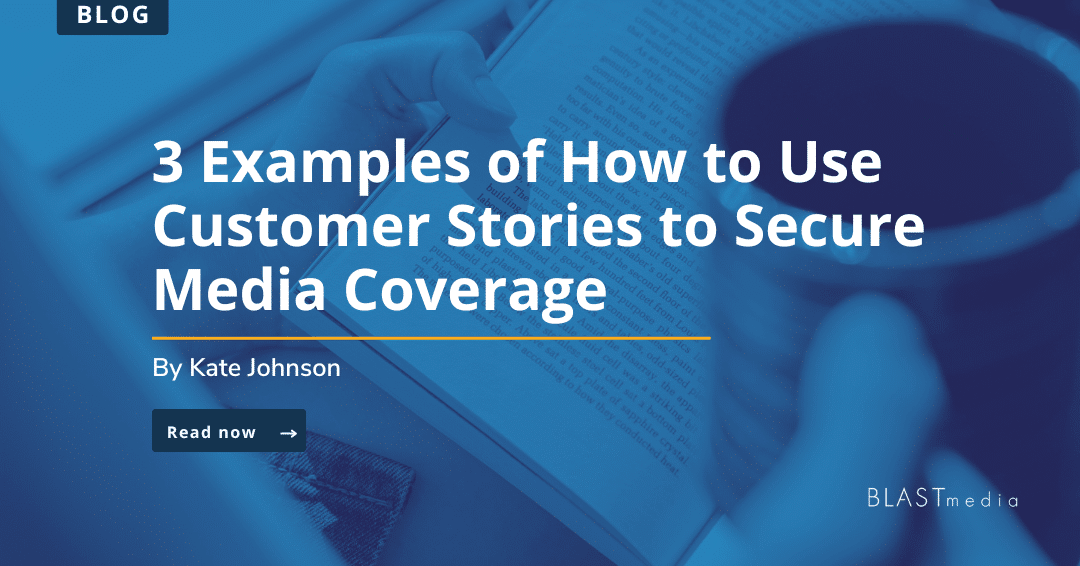At BLASTmedia, we constantly ideate ways to capture media coverage for our clients, such as thought leadership, leveraging a data report or reactive opportunities. One of the tried-and-true and most effective ways to secure valuable media coverage is leveraging a results-driven SaaS customer story. SaaS customer stories add another layer to a media relations strategy by offering real-world examples of the pain points our clients’ technologies solve for their customers.
Here are three examples of how to use SaaS customer stories to secure media coverage:
Case study
We all remember case studies from our time in school. In those cases, they often pertained to an experiment with a defined hypothesis, methodology for research, data and findings followed by results. Creating a case study about a SaaS customer story often follows a similar format. Many will first identify a problem, explore any previous attempts to solve the issue, outline the choice to work with a specific company or solution and finally share the results (which are ideally demonstrated through hard numbers like hours saved, budget reduced, etc.).
A great example is Bloomreach’s case study with customer Sur La Table on how the retailer uses Bloomreach’s GenAI to optimize e-commerce operations. Our team’s pitching efforts resulted in a standout piece of coverage in Chain Store Age, “EXCLUSIVE: Sur La Table boosts e-commerce results with generative AI.”
Success story
Showcasing a client’s success is the whole point of leveraging customer stories. While a case study uses a more scholarly format, a simple success story will offer the problem and then clearly outline how the product or organization proved to be the solution. Success stories will often include quotes from both the customer and the client’s spokesperson providing greater validation that the solution is effective.
These stories often have bolder headlines as well, such as “How Stop & Shop is using AI, not cookies, to target customers” or “The tech that boosted a Tennessee credit union’s consumer loans.”
Trend awareness
In the technology industry, various trends stay at the forefront of conversation while new ones appear seemingly daily. Some that come to mind right away are artificial intelligence, blockchain and the end of third-party cookies. While these conversations can often seem convoluted and broad, leveraging a SaaS customer is a great way to break through the noise.
Headlines with this tactic often sound something like, “ESG data collection: Beginning steps and best practices.” In this example, our client, Optera, used their customer, Zayo Group, to highlight the benefits of working with outside experts to help navigate ESG data collection. Rather than just offering the same old insights on sustainability trends, this story digs into concrete results and real-world examples of how a quality data capture program can impact sustainability initiatives.
Whether it be a case study or a simple success story, using SaaS customer stories is an effective tactic to generate valuable media coverage and positive press.





